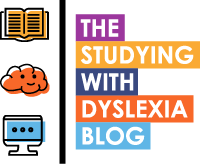 |
| Cigdem Knebel - Founder of Simple Word Books |
Cigdem writes...
Dyslexia causes difficulty in learning to read. This
hidden reading disability denies many children the opportunity to discover the
joys of reading. As their peers’ ability to read grows, their efforts end up
with frustration, pain and tears. Many parents cannot even imagine their
children reading for fun one day.
Although many dyslexics learn to cope with reading
struggles throughout their educational life, the biggest lingering impact is
the life-long stains on the self-confidence that affects these individuals
negatively throughout their adulthood.
Here are five steps for parents and educators to
proactively attack this challenge and strengthen the self-esteem at an early
age:
- Early Diagnosis: As many things in life, challenges are easier to resolve while they are small and contained. Watch out for the early signs of dyslexia and get children tested if needed.
- Build on Strengths: If there is a positive
diagnosis, understand their strengths and weaknesses. While working on
improving the weaknesses, such as reading, writing and spelling, never
lose focus on their strengths. Core strengths are the strongest path to
building self-confidence. They come naturally and flourish more easily.
Click for more information. - Positive Reinforcement: Praise children’s
efforts, not the sole results. Building reading, writing and spelling
skills will likely be a lengthy journey and focusing on results may
dishearten all involved.
- Celebrate Your Child: Encourage children to
explore their passions. Arts, sports, design are all creative ways to tap
into their natural potential. Learning happens easier when the brain is
engaged and they feel empowered.
- Right tools: As Albert Einstein, a famous
dyslexic, says: “Everybody is a genius. But if you judge a fish by its
ability to climb a tree, it will live its whole life believing that it is
stupid.” Give children the right books to read. Low-level/high-context
books are the best for early readers and young dyslexics. Such books will
bring fewer struggles and tears to the whole reading experience.
Cigdem Kebel
Who is Cigdem?
When Cigdem Knebel struggled to
find high interest, low readability chapter books a young dyslexic could
painlessly read, she began to write one herself for her 7 year old son. Cigdem is
the founder of Simple Words Books. Her mission is to help young dyslexics and
early readers with fluency, comprehension, but most importantly,
self-confidence. She accomplishes this by using many carefully chosen words in
her books with the skills of young dyslexics in mind. Her books focus on using:
• short and one syllable words,
• closed syllables words,
• Dolch Sight Words,
• short sentences.
Cigdem believes that all children love to read. This is no different for children with dyslexia; they just need to find that right book for them.
Her first book, Sam Is Stuck, is expecting to be that book for many children with dyslexia. It is a hybrid of Hop on Pop by Dr. Seuss and Frog and Toad by Arnold Lobel. It fills the void in the market for low level high content chapter books.
Some other info about Simple Words Books:
Check out Simple Words Books at simplewordsbooks.com and Join READlexia Book Club for FREE to receive FREE:
- Sam Is Stuck: Writing Practice Study Workbook - FREE on the website.
• short and one syllable words,
• closed syllables words,
• Dolch Sight Words,
• short sentences.
Cigdem believes that all children love to read. This is no different for children with dyslexia; they just need to find that right book for them.
Her first book, Sam Is Stuck, is expecting to be that book for many children with dyslexia. It is a hybrid of Hop on Pop by Dr. Seuss and Frog and Toad by Arnold Lobel. It fills the void in the market for low level high content chapter books.
Some other info about Simple Words Books:
Check out Simple Words Books at simplewordsbooks.com and Join READlexia Book Club for FREE to receive FREE:
- Sam Is Stuck: Writing Practice Study Workbook - FREE on the website.


